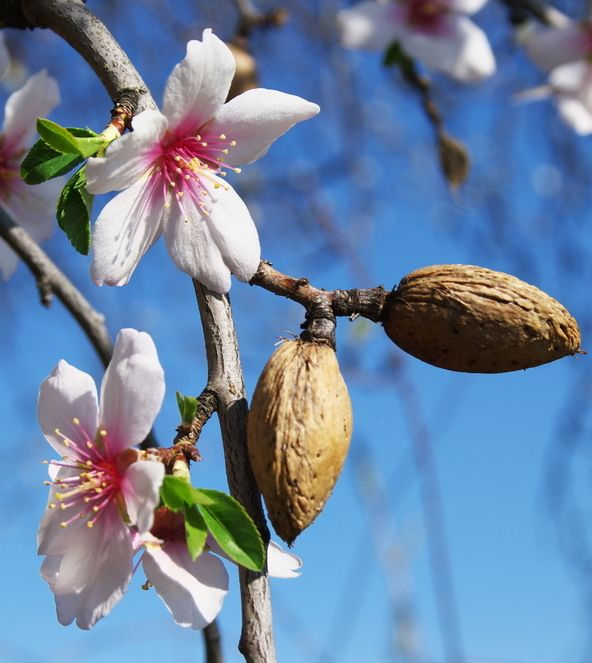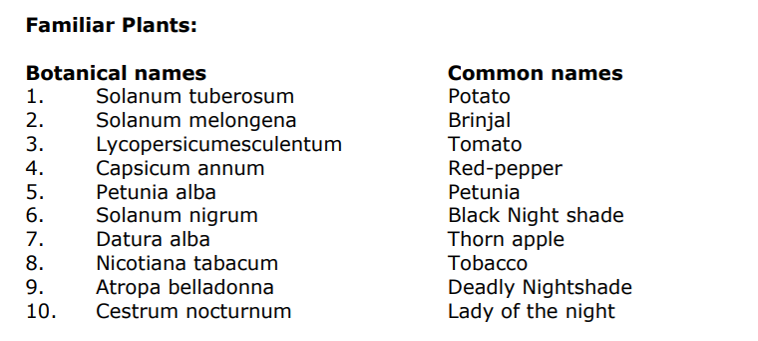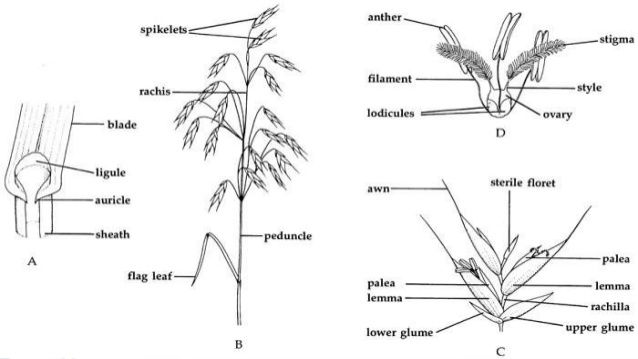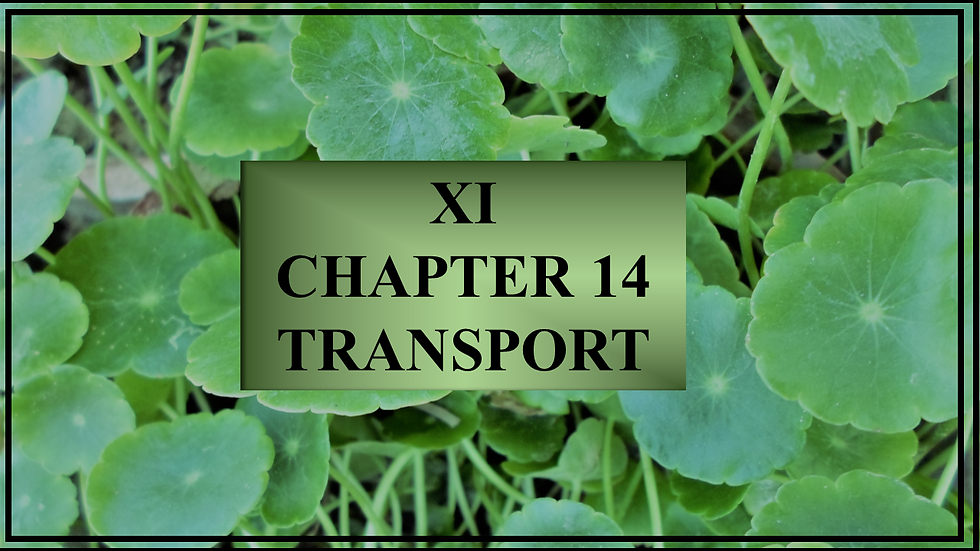XI CHAPTER 9 KINGDOM PLANTAE
- Kiran Syed

- Feb 16, 2020
- 6 min read
Updated: Mar 15, 2022


Division: Bryophyta
Class:Hepaticea(Liverworts)
Examples:
Riccia

Marchantia

Class:Musci(Mosses)
Examples:
Funaria

Sphagnum

Class:Anthocerotae(Hornworts)
Examples:
Anthoceros

Sub Division: Psilopsida
Examples:
Psilotum



Sub Division: Lycopsida(The Club Mosses)
Examples:
Selaginella

Lycopodium

Sub Division: Sphenopsida(The Horse Tails)
Example:
Equisetum


Sub Division: Pteropsida(The Ferns)
Example:
Dryopteris

General Characters of Ferns
•Well developed vascular system
•Presence of true root stem and leaves
•Leaves: have large surface area
•Leaves: Simple/ Compound
•Stem: Prostate/ Upright
•Sporophyte: Diploid, contain sporangia under leaves, homosporous
•Gametophyte: have anthridiumand archegonium










Sub Division: Spermopsida (The Seed Plants)
•Gametophyte
•even more reduced than ferns,
•doesn’t do photosynthesis,
•not free living
•Sperms don’t have flagella
•Embryo
•Have desiccation resistant seed coat
•Have a supply of nutrition



Gymnosperms
Cycads (having Large Palm like leaves)

Ginkgo (Ginkgo biloba, commonly known as ginkgo or gingko, also known as the maidenhair tree, is the only living species in the division Ginkgophyta)


Conifers
Pinus longifolia (Pine Tree)
•Sporophyte: Diploid
•Reproductive Structures formed on sporophyte plant: Cones (Ovule cone/Female Cone & Pollen Cone/Male Cone)
•Cones contain sporangia which give rise to haploid megaspores and microspores (Heterospory)
•Sporangia are produced by highly modified leaves in cones called sporophylls


Pinus Male Cone
A Habitat of a pine tree (Gymnosperms) with male inflorescence. Each male inflorescence consists of a large number of strobili arranged in a spiral. Pollen is formed in these cones. B Detail of the male inflorescence. D Longitudinal section through the male cone. 1 microsporophyll, 2 pollen sac with pollen

Pinus Female Cone
A Longitudinal secion through a female cone 1 Sterile scale 2 Megasporophyll, 3 Integument, 4 Megasporangium, 5 Micropyle B Female cones. The ovule can be found on megasporophylls, arranged in a strobilus. 1 female strobili, 2 Seeds with wings C On each megasporophyll of the female strobilus two seeds can develop following fertilization. 1 Seed, 2 Wing (outgrowth)

Production of Male Gametophyte and Female Gametophyte


Pinus Pollen

Stages of Development of Male Gametophyte
•The pollen nucleus divides mitotically to produce a small lens-shaped first prothallialcell towards the proximal end and a large central cell on the distal end
•The central cell again cuts off a second prothallialcell and an antheridialinitial
•Both the prothallialcells last for a short time and the second prothallialcell remains attached to the first prothallialcell.
•The antheridialinitial divides to form a small antheridial cell (generative cell) and a large tube cell
•The pollen grains are released from the microsporangium containing 2 prothallialcells, a generative cell and a tube cell).
•When in contact with the female sporangium pollen develops the pollen tube
•Nucleus of tube cell enters the tube
•Generative cell divides into two daughter cells
•One daughter cell produce two sperm cells
•Mature Gametophyte contain 6 nuclei before fertilization

Fertilization

Life Cycle of Pinus

Pinus Seed

Angiosperms
Flowering Plants, Seeds enclosed in fruit
Parts of a Typical Flower

Development of Angiosperm Gametophyte




Spermopsida as Successful Group of Land Plants
1- Characteristics of Gametophyte
•Gametophyte generation is reduced
•Protected inside sporophyte
•Depends on the sporophyte
•In mosses and liverworts gametophyte is conspicuous (clearly visible) so it was prone to damage.
•In ferns, the free-living gametophyte prothallus was unable to survive without water (can easily be dried out)

2- Process of Fertilization
•Not dependent on water (Sperm don’t have to swim)
•Sperm are not motile (Dispersed within protective pollen)
•Transfer of sperm to the egg cells takes place by the help of pollen tube. (Ovum secured within ovule)

3- Development of Seed
•Ovules are retained in parent sporophyte (Protected by it) so the development of seed is possible.
4- FurthurAdaptations
a)Xylem and Schlerenchyma provides support, secondary growth is present (formation of wood)
b)True roots for better absorption of water
c)Presence of cuticle and epidermis for protection from water loss.
d)Presence of stomata for gaseous exchange.
e)Adaptations to a hot, dry environment







1- INFLORESCENCE:
•Solitary(a single flower on a stem)
•Racemose (A terminal flower is never formed.)
•Cymose(the terminal bud forms a terminal flower and then dies out. )

2-FLOWERS
•Bisexual(One flower have both androciumand gynoecium)
•Actinomorphic (characterized by radial symmetry)
•Hypogynous(sepals, petals and stamens are attached to the receptacle below the ovary)
•Epigynous (sepals, petals and stamens arise from the top of the ovary)



3-CALYX
•Epicalyx (formation of an additional whorl around the calyx)
•5 Sepals (free or fused)

3-COROLLA
•5 Petals (or multiples of 5)
•free from one another
•Imbricate (
s show irregular overlapping)
•Rosaceous (broad petals, like that of a rose)



5-GYNOECIUM
•1 to numerous separate carpel
•2 to 5 carpel forms compound pistil
• Ovary superior (above the petals and sepals) or inferior (below petals and sepals)
•Ovules 2 or more per carpel



•Placentation basal (the ovules arise from the base )
•Placentation Axile(The presence of septum)
•Apocarpous(carpels that are not joined together)


•Stigma Spathulate(spoon shaped) or Capitate (Head-like)


DIAGNOSTIC CHARACTERS:
•Rosaceous Corolla
•Numerous Stamen
•Polyandrous (Free Stamen)
•Monocarpillary/ Polycarpellary (Single or multiple carpel)
•Syncarpous/Apocarpous


Familiar Plants:
1. Pyrus malus –Apple- Seb
2. Pyrus communis -Pear -Nashpati
3. Prunus persica -Peach -Aru
4. Prunus amygdalus- Almond -Badam
5. Rosa indica –Rose- Gulab






1- INFLORESCENCE:
•Axillary cyme

2- FLOWERS:
•Bisexual
•Actinomorphic/ Zygomorphic
•Bracteate/ Ebracteate
•Hypogynous
•Pentamerous


3- CALYX:
•5 United Sepals
•Usually persistant

4- COROLLA:
•5 United Petals
•Corolla (Rotate/ tubular/ infundibular)




6- GYNOECIUM (Cont):
•Style terminal (attached at the base of ovary)
•Simple/ lobed
•Placentation axile
•Ovule numerous



DIAGNOSTIC CHARACTERS:
Flower actinomorphic penta-merous, stamen 5,
epipetalous ovary bi-locular, obliquely placed, placentation axile, fruit berry(fleshy fruit without a stone, usually containing a number of seeds.)or Capsule(dry fruit which splits open to release the seeds. )


Economic importance:
•The most important plants in the family are potato and tomato.
•Other important food plants are egg plant or brinjal vern; bengan,
the fruit of capsicum and capsicum frutenscensare rich in vitamin C and A, are used as condiment.





•Physalis(Ground-cherry vern. Rasbhari) produces an edible fruit enclosed in a bladder-like persistantcalyx the husk, hence the name husk tomatoes.

•Another plants of great commercial value is tobacco plant leaves of which are dried and made into tobacco, which is used in making cigarettes. Many members of this family yield powerful alkaloids, e.g. Atropabelladonna, Datura(jamestown weed) which are rich in atropine and daturinerespectively, which are used medicinally.



•Many plants are cultivated in the gardens for their beautiful flowers, these includes Petunia, Nicotiana, Cestrum Schizanthus, Brunfelsia Solanumetc.




1- INFLORESCENCE:
•Racemose (growing region at the tip of the flower stalk continues to produce new flower buds during growth)
• or solitary axillary

2- FLOWER:
•Bisexual, isomorphic, bracteate, pedicellate, hypo-to perigynous.


3- CALYX:
• 5 sepals, more or less united in a tube, mostly hairy.

4- COROLLA:
• Papilionaceous, Petals 5,
•the odd outer petal is large and conspicuous and is called standard or vexillum,
•two lateral ones fire called wings and
•2 anterior inner most that fuse to form a boat-shaped structure called the keel or carina,
•Descending imbricate. (Here the odd petal is posterior and completely outside. The anterior pair of petals are completely inside)



5- ANDROECIUM:
• 10 stamens, mostly diadelphousnine fused to form sheath round
•the pistil, while 10th posterior one is free.

6- GYNOECIUM:
• A simple pistil
• 1- carpeled, with 1 - locule;
•ovary superior;
•ovule 1 or more;
•style long, bent at its base flattened and hairy, stigma simple

DIAGNOSTIC CHARACTERS:
Papilionanaeouscorolla, 10 stamens, diadelphous,
monocarpellary.

Economic importance:
•Some common
species of protein rich pulse yielding plants are:-
•Cicerarietinum (gram or thick Pea vern. Channa),


•Pisum Satinvum(Pea vern.Muttor),



•Phaseolusmung (vern. Mash or urad),

•Phaseolus vulgaris (kidney bean).


MedicagoSativa Alfalfa vern. Lusanis one of the worlds best forage crop for
horses. Vicia, Melilotusand Trifoliumare also cultivated as main fodder crops.

Main timber plants are butea,


The seed of Arachishypogea Peanut or moong phaliare edible and also used for
extraction of Peanut oil which after hydrogenation is used as a vegetable oil


Indigo dyes are obtained from indigofera tinctoria(vern. Neel) and Butea
monosperma, yielding yellow dye from flowers


Many plants of this family are important for medicines, these include Glycyrrhiza
glabrafor cough and cold, clitoria termateaused against snake bite.

The red and
white seeds of Abrus precatoriousare used by jewellersas weights called ratti.


Some important ornamental plants includes Lathyrus, Lupinus, Clitoria, Butea etc.




1- INFLORESCENCE:
• Axillary or terminal raceme


2-FLOWERS
• Bisexual,
•zygomorphic,
•rarely actinomorphic,
•perigynous

3-CALYX
•Of 5 sepals free,
•or connate (Fused) at base,
•imbricate or rarely valvate,
•Often coloured.

3-COROLLA
•Of mostly 5 petals,
•free, imbricate,
•the posterior petal inner most in bud.

4-ANDROECIUM
•Of 10 stamens or fewer, rarely numerous free or variously
•connate, extra staminal disc sometimes present; sometimes staminodes present.

5-GYNOECIUM
•A simple pistil of 1 carpel;
•ovary superior,
•unilocular placentation
•marginal; ovule 1-many;-style 1 simple, long; stigma simple.



DIAGNOSTIC CHARACTERS:
•5 polysepalous,
•5 polypetalous,
•10 stamens,
•polyandrous
•few stamenodous,
•monocarpellary.

ECONOMIC IMPORTANCE:
•The leaves of cassia fistula are used to cure ring worm and skin diseases.

•C.senna and C.obovataare cultivated for the leaves which yield the drug senna, which is the base for a laxative.
•C.senna and C.obovataare cultivated for the leaves which yield the drug senna, which is the base for a laxative.

•Oil extracted from the seeds of cynometera cauliflora is applied externally for skin diseases.

•Common ornamental plants are Bauhinia variegata(Kachnar) cassia fistula (Amaltas), Parkinsonia, poinciona regia.


•The leaves and flowers bud of Bauhinia varigata (Kachnar) are used as vegetable.

•The acidic fruit of Tamarindus indicaare edible and are rich in tartaric acid.

•The heart wood of Haematoxylon (Long wood) yield the dye hematoxylin.






1- INFLORESCENCE:
• Racemose

2-FLOWERS
• Actinomorphic,
•bisexual,
•Hypogynous,
•bracteate;
•bract small

3-CALYX
•Usually of 5 sepals
•imbricate or valvate,
•generally fused toothed or lobed,
•mostly green

3-COROLLA
•5 petals,
•valvate,
•free or fused,
•corolla lobed

4-ANDROECIUM
•5 to numerous stamens,
•free monadelphous,
•Adnate (Joined) to the base of corolla;
•anther versatile



5-GYNOECIUM
•A simple pistil of 1 carpel,
•ovary unilocularsuperior
•ovules many,
•placentation marginal,
•style long filiform,
•stigma terminal minute


DIAGNOSTIC CHARACTERS:
•5 fused sepals,
•5 free or fused petals,
•androecium
•Monoadelphous
•monocarpellary

ECONOMIC IMPORTANCE:
•Many trees of this family including species of Acacia, Albizzlaand Xylia provide commercially important wood, which is used for construction purpose or for furniture or as a fuel. The wood of Albizzla lebbekis used in cabinet work and
•railway carriages.
•

Arabic gum is obtained from Acacia niloticaand A. Senegal Katha a dye is
obtained from Acacia catechu. The tender leaves of Accacia niloticaare used as
blood purifier.

Some common garden Plants grown for their beautiful flowers Mimosa Pudica,
Acacia melanoxylon. A few species of Prosopisare planted in the arid zones for
breaking the wind pressure.




1- INFLORESCENCE:
• Composed of units called spikelets, variously arranged, spikelets
•consisting of bracts, distichoisly(alternately) arranged along a slender axis (rachilla) the two lower bracts (glumes) which are empty.


2-FLOWERS
• Bisexual or unisexual,
•zygomorphic,
•hypogynous, protected by palea.
•Perianthis represented by to minute scales called the Lodicules (may be absent).

3-ANDROECIUM
•It has usually 3, or 6 stamens, anthers versatile and pendulous.
4-GYNOECIUM
•It is tricarpellary syncarpousor monocarpellary,
•ovary unilocularsuperior,
•styles may be 2,
•stigmas feathery


DIAGNOSTIC CHARACTERS:
• Perianth, 3 to 6 stamens free, versatile anthers,
•gynoecium monocarpellary flowers are unisexual.
ECONOMIC IMPORTANCE:
•Cereals and millets which are chief food stuff of mankind belong
•to this family, like
•Wheat,

Oats,

Rice,

Corn,

Barley,

Millets,

•Sugar is obtained from sugar-cane, bamboo-shoots are eaten as a vegetable or soup dish. Nearly all the cereal and millet crops are given to animals as fodder.





Comments